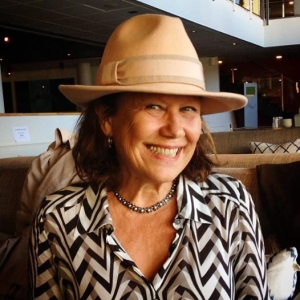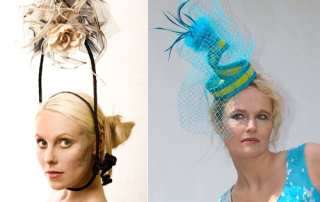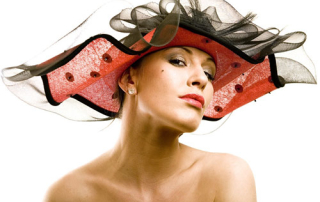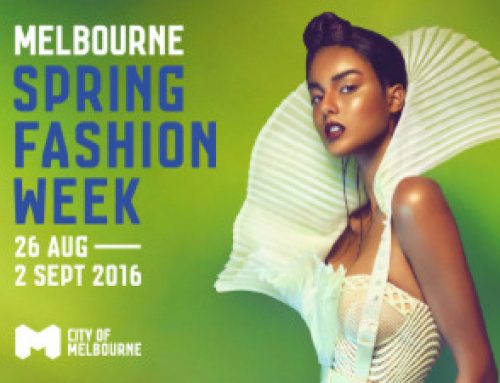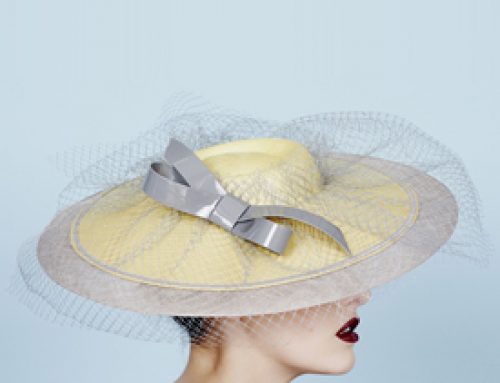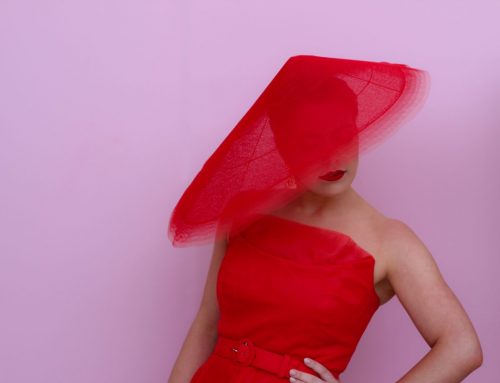How did you become interested in millinery?
When I was four years-old, I got my first hat, and I have been fascinated by hats ever since. I assume it must have something to do with pleasure and a feeling for style and elegance, not unusual for girls. I bought my first designer hat when I was 18. At that age I started to design and sew my own clothes, but I did not see the opportunity to be a milliner before I was 50. By that time I was making Norwegian national costumes for women, and by chance I bought an almost complete set of milliner tools and a lot of hat blocks. Although hat design and making is difficult, the rest is quite simple: ever since I have been making hats.
Where did you learn millinery?
I have my millinery education from Oslo, both the formal part (the milliner exam) and the practical work together with other hat designers and milliners. In addition I have several courses; among them three with Waltraud Rainer, one of Australia’s foremost milliners. Last summer I joined a course with Jane Smith at Wombourne School of Millinery. I also read a lot about hats and different epochs. In my opinion I’m never fully qualified. When you are making hats there is always something new to discover or develop.
How long have you been a milliner for? Where else did you work?
I have been a hat designer and a milliner for 8 years now. But I have a lot of experience in creative working. From comprehensive school, but also in ballet (for several years I had my own ballet school) and from working in theatre with children. I worked for six years in the board of the well known poetry festival Son Poesidager, and for many years I had my own art work shop for children. And I’m the mother of five children, two step children and two foster children. And now the grandchildren seems to be coming. But I still feel young.
Where do you get inspiration for your design?
Inspiration is often a result of work. And of course intuition, which in its turn is a result of a non verbal experience and real knowledge. I am inspired by watching other milliners’ hats. But that is not enough. I can take an example: in Copenhagen, which I visit every year, there is a Saturday market where I look for things. Once I found a wooden dish which was formed like a big scallop. Later I read about Gugu Dlamini from South Africa, who was killed because she made public that she had aids. I created a hat to memory her by, where the dish was the block, as a metaphor for protection and vulnerability.
Other times I can get ideas and inspiration when I am charged with a task, for instance when I was asked to make four different hats for The Grand Opening Day of the Duty Free at Oslo Airport. The hats symbolised sweets, tobacco, champagne and perfume. When Norway’s most prominent newspaper, “Aftenposten” (The Evening Mail), went from a full format newspaper to a tabloid format, I made one hat using the last old edition and another out of the new tabloid edition.
But the most essential part for any milliner is people. Whenever someone wants a hat made by me, I immediately think: what kind of hat will fit her and underline her personality? And hat making has made me think like that every time I see a person new to me. For anyone who wants to create something for people, people have to be first and foremost. So to me people and work is best for any kind of inspiration.
What has been your most enjoyable commission?
Beside the three mentioned projects, I have had many exhibitions and shows in art galleries and fashion shops. Speaking of fashion, I have also participated in Fashion Awards in Oslo. And I find hat design for brides very enjoyable. There is a lot to see from orders like these on my website.
How would you describe your style of hats?
They are feminine, sculptural and, I guess, some of them cause surprise. I want them to be usable in many connections, both for everyday and at a party or a celebration. For exhibitions I tend to make spectacular hats.
Who do you make hats for?
Anyone who wants an elegant or stylish hat. Anyone, and for all occasions. I prefer to talk with the costumer before making a hat. But Norway is a country where middle class people like to be modest and do not want to play nobility or upper class, although they are rich. In many ways I like that, because this attitude is founded on the idea of equality. On the other hand it leads to the fact that there is no queue in front of a milliner’s shop here.
What materials and techniques do you favour?
Oh, if I could, spectacular, sculptural, derbyish hats or brides hats. But I also find pleasure in making cocktail hats or party hats, formed in felt, etamine, thai silk, sinamay and straw, decorated with feathers, crinoline, tulle. But also fish skin! I make many different hats and use a variety of techniques, among the hats made on blocks, by free hand, on flat pattern, and so on.
Any other interests?
We live so close to the Oslofjord that we can see the fish. And of course we use the fjord just as natural as a Londoner will use the street. I like to cook, but lately I have become more and more fascinated by my husband’s cooking! He catches the fish himself and makes delicious dishes, cooked, fried, baked or salted. Perhaps our joy of nature’s resources is a parallel to what I want a hat to be: simple and sophisticated, rough and refined. Just like when life is at its best.


